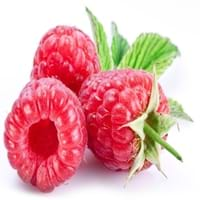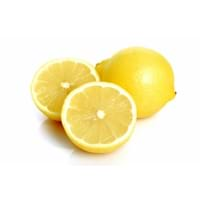Health Benefits
Cancer prevention, Heart care, Prevents macular degeneration, Reduces blood circulation problems
Arthritis treatment, Asthma treatment, Cancer prevention, Kidney stone treatment, Prevents constipation, Purging blood, Treatment of rheumatism
General Benefits
Anti-inflammatory properties, Controls blood sugar levels, Digestive aid, Eye care, Helps in weight loss
Boosts immune system, Cures headache, Cures fever, Digestive aid, Flu treatment, Maintains healthy cholesterol level, Treatment of common cold
Skin Benefits
Anti-aging benefits, Brightens and lightens complexion
Heals sunburn, Reduces wrinkles, Skin rejuvenation, Treatment of acne, Treatment of skin diseases
Hair Benefits
Acts as moisturizer, Regulates hair growth, Shiny hair
Prevents hair loss, Treatment of dandruff
Allergy Symptoms
Breathing difficulty, Eczema, Hives, Itching, Nasal congestion, Runny nose, Sneezing, Watery eyes, Wheezing
Eczema, Hives, Inflammation, Itching, Skin rash, Swelling
Side Effects
Allergic reaction
Diuretic effects, Heart burn, Tooth decay, Chances of sunburn
Best Time to Eat
Best if taken as a breakfast (or empty stomach), As a snack in the late afternoon, Don't eat after meal, Morning time (before lunch)
Along with meal, Best to drink lemon water on an empty stomach., Don't consume at night and before bed
Vitamin B5 (Pantothenic Acid)
Vitamin C (Ascorbic Acid)
Vitamin K (Phyllochinone)
Calories in Fresh Fruit with Peel
Not Available
Calories in Fresh Fruit without Peel
Not Available
Type
Berry
Citrus, Tree fruit
Season
Summer
All seasons
Varieties
Amity, August Red, Boyne, Canby, Caroline, Comet, Dinkum, Dorman Red, Latham, Meeker, Black Hawk, Hayda, Lauren, Meeker and Latham
Avalon Lemon, Bears Lemon, Buddha's Hand, Bush Lemon, Citron, Eureka Lemon, Dorshapo Lemon, Finger Citron and Fino Citron
Color
Black, Purple, Red, Yellow
Yellow, Yellowish-orange
Origin
Europe, North Asia
China, India
Soil Type
Sandy loam
Well-drained
Climatic Conditions
Cold
Hot, Sunny
Facts about
- There are more than 200 varieties of raspberries.
- In USA, 90% of the raspberries are grown in Washington, California and Oregon.
- They do not ripe after they are picked.
- A raspberry contain 100 to 120 seeds.
- Oil extracted from lemon peels is used for fingerboard of guitars.
- During Renaissance, ladies used lemons to redden their lips.
- Aroms of lemon decreases the level of stress hormones.
Top Producer
Russia
China
Other Countries
Azerbaijan, Canada, Mexico, Poland, Serbia, Spain, Ukraine, United Kingdom, United States of America
Argentina, Brazil, India, Iran, Italy, Mexico, Spain, Turkey, United States of America
Top Importer
United States of America
United States of America
Top Exporter
Poland
Mexico
Botanical Name
Rubus Idaeus
Citrus limon
Synonym
Not Available
Not Available
Subkingdom
Tracheobionta
Tracheobionta
Division
Magnoliophyta
Magnoliophyta
Class
Magnoliopsida
Magnoliopsida
Species
R. idaeus
C. limon
Generic Group
Rose
Citrus fruit
Difference Between Raspberry and Lemon
We might think that Raspberry and Lemon are similar with respect to nutritional value and health benefits. But the nutrient content of both fruits is different. Raspberry and Lemon Facts such as their taste, shape, color, and size are also distinct. The difference between Raspberry and Lemon is explained here.
The amount of calories in 100 gm of fresh Raspberry and Lemon with peel is 53.00 kcal and Not Available and the amount of calories without peel is Not Available and 29.00 kcal respectively. Thus, Raspberry and Lemon belong to Low Calorie Fruits and Low Calorie Fruits category.These fruits might or might not differ with respect to their scientific classification. The order of Raspberry and Lemon is Rosales and Sapindales respectively. Raspberry belongs to Rosaceae family and Lemon belongs to Rutaceae family. Raspberry belongs to Rubus genus of R. idaeus species and Lemon belongs to Citrus genus of C. limon species. Beings plants, both fruits belong to Plantae Kingdom.









